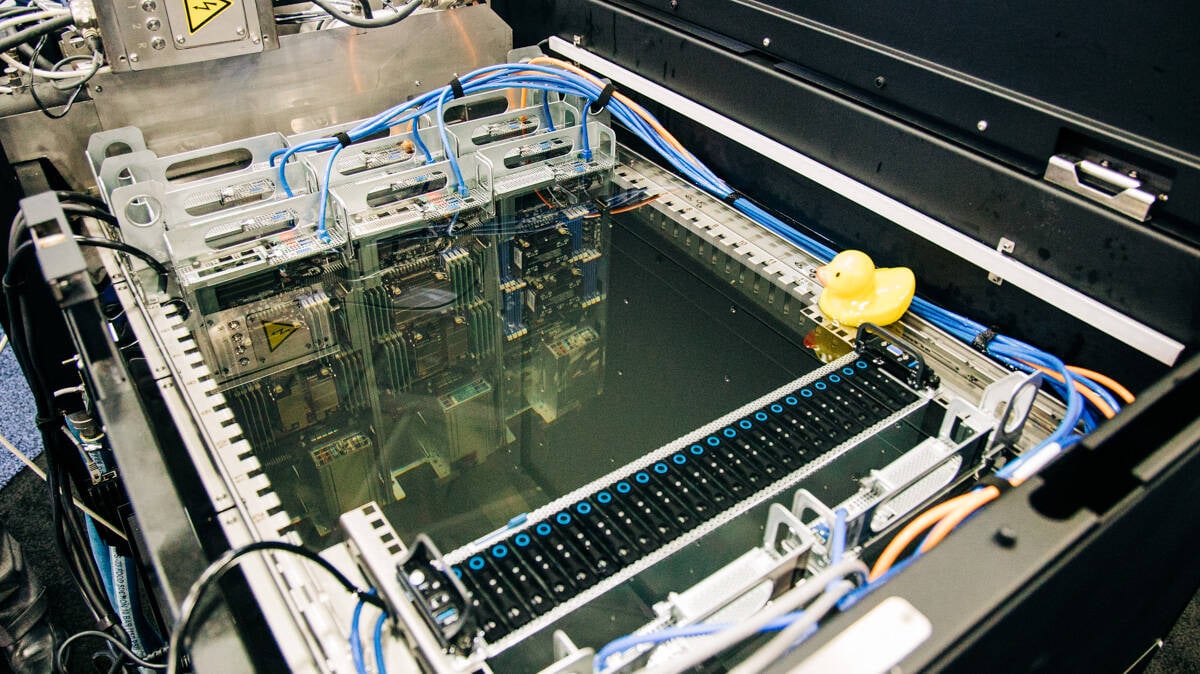Submer Dives Into $55.5M Funding To Cool Down Hot-blooded AI Datacenters

Cooling specialist Submer has scored $55.5 million in a fresh funding round to fuel expansion, touting its tech as part of a more sustainable way to operate datacenters – something sorely needed in the era of AI.
The Barcelona headquartered biz, which has a manufacturing operation in Houston, Texas, received the backing via investment from M&G, along with existing stakeholders Planet First Partners and Norrsken VC.
Submer claims that with increasingly powerful hardware being fitted in servers, driven by the demands of AI workloads, datacenters are consuming vast amounts of energy and water, and immersion cooling technology is the answer.
Much has been written by The Register regarding the environmental footprint of bit barns and the energy conundrum as more facilities are built to meet customers' calls for compute.
Last month, financial services biz Morgan Stanley published a report claiming that datacenters are set to emit 2.5 billion tonnes of greenhouse gas (GHG) emissions globally between now and the end of the decade, a figure three times greater than if generative AI had not been developed.
Datacenter building continues apace in the UK, especially now that any planning objections may be overruled after the incoming Labour government classed them as Critical National Infrastructure (CNI).
Developer Atlantic Hub was given the go-ahead for a build at Foyle Port Innovation Park in Londonderry, which it claims will be one of the largest infrastructure developments in the region, and Northern Ireland's first large-scale datacenter campus.
Another company, Kao Data, has commenced construction of its new £350 million ($458 million) 40 MW facility in Stockport, Greater Manchester, engineered for AI and advanced computing and set to be powering customers workloads by 2026.
These are dwarfed by the investment by US giant Blackstone, which is putting £10 billion ($13.4 billion) into a massive AI datacenter project near Blyth, Northumberland, which it claims will become the biggest AI datacenter in Europe.
One reason for this is their growing use of energy. A study published in June claimed that power consumption by datacenters in the US is set to more than double by the end of the decade – rising from 130 terawatt hours (TWh) in 2023 to 307 TWh in 2030. And in July, figures published by Ireland's Central Statistics Office (CSO) revealed that data dormitories consumed more than a fifth of the country's electricity supply during 2023.
- Intel details coral-shaped immersion cooler that bubbles like Mentos in Coke
- When it comes to liquid and immersion cooling, Nvidia asks: Why not both?
- To quench AI's thirst, the way we build, operate datacenters needs to change
- Castrol immerses itself deeper into liquid cooling with researcher
It isn't just energy. Some facilities also consume water as part of their cooling infrastructure, particularly those using evaporative cooling. A recent report indicated that datacenters in the US state of Virginia had notched up their water use by almost two-thirds since 2019, with claims that bit barns serviced by the Loudoun water utility had increased consumption of water by more than 250 percent between 2019 and 2023.
Submer, of course, reckons that traditional air-cooling methods are becoming increasingly inadequate, and immersion cooling is the sustainable and scalable solution for datacenters. The reason is that it reduces the need for energy-hungry air conditioning systems – up to 20 percent of datacenter power consumption can be directly attributed to this – and the coolant used is a non-conducting fluid instead of using water.
A survey conducted by The Register earlier this year found that more than a third of enterprises (38.3 percent) expect to employ some form of liquid cooling infrastructure in their datacenters by 2026. Of these, 16.3 percent said they were going for direct-to-chip (DTC) liquid cooling, while just 6.5 percent said they planned to go all-in for immersion cooling.
This is clearly a growth area. Supermicro said it expects liquid cooling to be installed in 30 percent of racks the company ships next year, while hosting firm Equinix disclosed plans at the end of last year to expand support for liquid cooling across a hundred of its datacenter facilities, driven by AI.
However, for more creative cooling solutions, there is the facility in Hokkaido in Japan that makes use of snow to cool its IT infrastructure, then takes the resultant meltwater and uses it to cultivate eels to take to market. There is also a company in Korea called Tomorrow Water that announced plans to colocate datacenters with sewage treatment plants, using the surplus heat to cut energy requirements for waste treatment, while some of the treated water then becomes coolant water for the IT infrastructure. ®
From Chip War To Cloud War: The Next Frontier In Global Tech Competition
The global chip war, characterized by intense competition among nations and corporations for supremacy in semiconductor ... Read more
The High Stakes Of Tech Regulation: Security Risks And Market Dynamics
The influence of tech giants in the global economy continues to grow, raising crucial questions about how to balance sec... Read more
The Tyranny Of Instagram Interiors: Why It's Time To Break Free From Algorithm-Driven Aesthetics
Instagram has become a dominant force in shaping interior design trends, offering a seemingly endless stream of inspirat... Read more
The Data Crunch In AI: Strategies For Sustainability
Exploring solutions to the imminent exhaustion of internet data for AI training.As the artificial intelligence (AI) indu... Read more
Google Abandons Four-Year Effort To Remove Cookies From Chrome Browser
After four years of dedicated effort, Google has decided to abandon its plan to remove third-party cookies from its Chro... Read more
LinkedIn Embraces AI And Gamification To Drive User Engagement And Revenue
In an effort to tackle slowing revenue growth and enhance user engagement, LinkedIn is turning to artificial intelligenc... Read more

